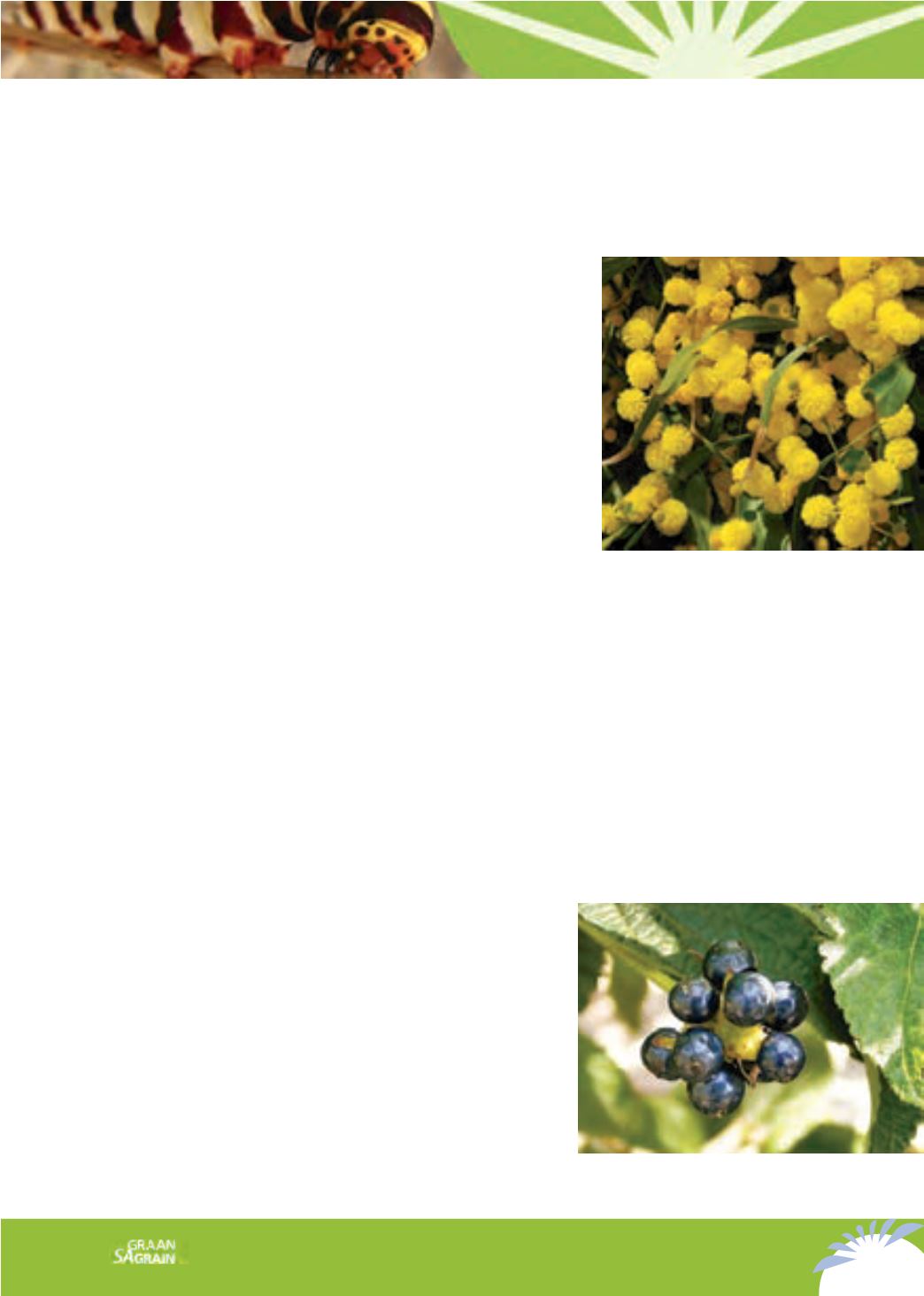

77
GRAANGIDS
2017
GRAIN GUIDE
3
2
Acacia saligna
Lantana camara
Continued on p. 79
Acacia saligna
(Labill.) H.L. Wendl
The Port Jackson willow is indigenous to Australia and is described as a perennial shrub or small
tree that can grow to between 3 m and 7 m tall. It grows in a variety of soil types and occurs
particularly in disturbed areas or road reserves. It has an extensive root system comprising a
well-developed taproot and several shallow, lateral roots. This tree grows rapidly and its useful
life is between 15 and 20 years. Many seeds are produced per plant and they are also the main
propagation mechanism.
The negative aspects of the Port Jackson willow include the
following: it competes for light, space, water and nutrients;
it displaces indigenous vegetation quickly; it changes the
landscape and habitat; the seed is a contaminant; obstruction
– dense stands restrict the movement of animals; in water and
river courses it causes an obstruction to water flow; it forms an
obstruction in terms of vision; consumes large quantities of wa-
ter; reduces the grazing capacity and biodiversity if dense stands
occur. The total hectares invaded by this tree is
1 852 155 ha
.
If all these trees were to be placed in one spot, they would oc-
cupy
108 004 ha.
The calculated annual water consumption
of this tree is
171 million m
3
.
A rust fungus and seed-eating snout beetle act as biological con-
trol agents on the plants – the bio-agents are very effective and
should be employed as the first control mechanism. Although
very hot fires can cause the tree to die, it is not recommended as
control method, as fire will promote seed germination. Mechanical control alone is not recom-
mended, as sprouting will occur. Various chemicals are registered to control the plant and can be
useful in combination with mechanical control. According to the CARA Act the Port Jackson willow
is classified as a category 2 plant – it may occur only in a demarcated area if permission for this
has been obtained. (Any plants outside the demarcated area must be controlled.) If the landowner
does not have permission, it must be controlled. According to NEMBA it is a category 1b plant – it
is therefore an alien species that should be controlled, removed and destroyed if possible. No
trading in this plant may take place.
Lantana camara L
.
Lantana originally comes from Central and South America. It is an erect to spreading thorny
shrub. It has a well-developed root system and does not display specific habitat preferences – it
therefore occurs in various areas in a variety of soil types. Propagation of the lantana is usually
through seeds that are often disseminated by birds, but new plants can also develop from
the rhizomes. It is globally regarded as one of the major
weed species.
The negative aspects of lantana are the following: It
competes for light, space, water and nutrients; it displaces
grasses; it inhibits the growth of grass (is allelopathic); it
changes the landscape and habitat, particularly if it occurs
in dense stands; it is toxic to animals; it is thorny; the seed is
a contaminant; it causes obstruction (access, cultivation, vi-
sion); increases erosion; reduces soil binding; forms impene-
trable stands; reduces the grazing capacity and biodiversity if
in dense stands and reduces the biodiversity of invertebrates
in the soil. Lantana invasion covers about
2 235 395 ha
– if this area is condensed so that the trees represent 100%
invasion, it would cover
69 211 ha.
The calculated annual
water consumption of lantana is
97 million m
3
.
Various

















